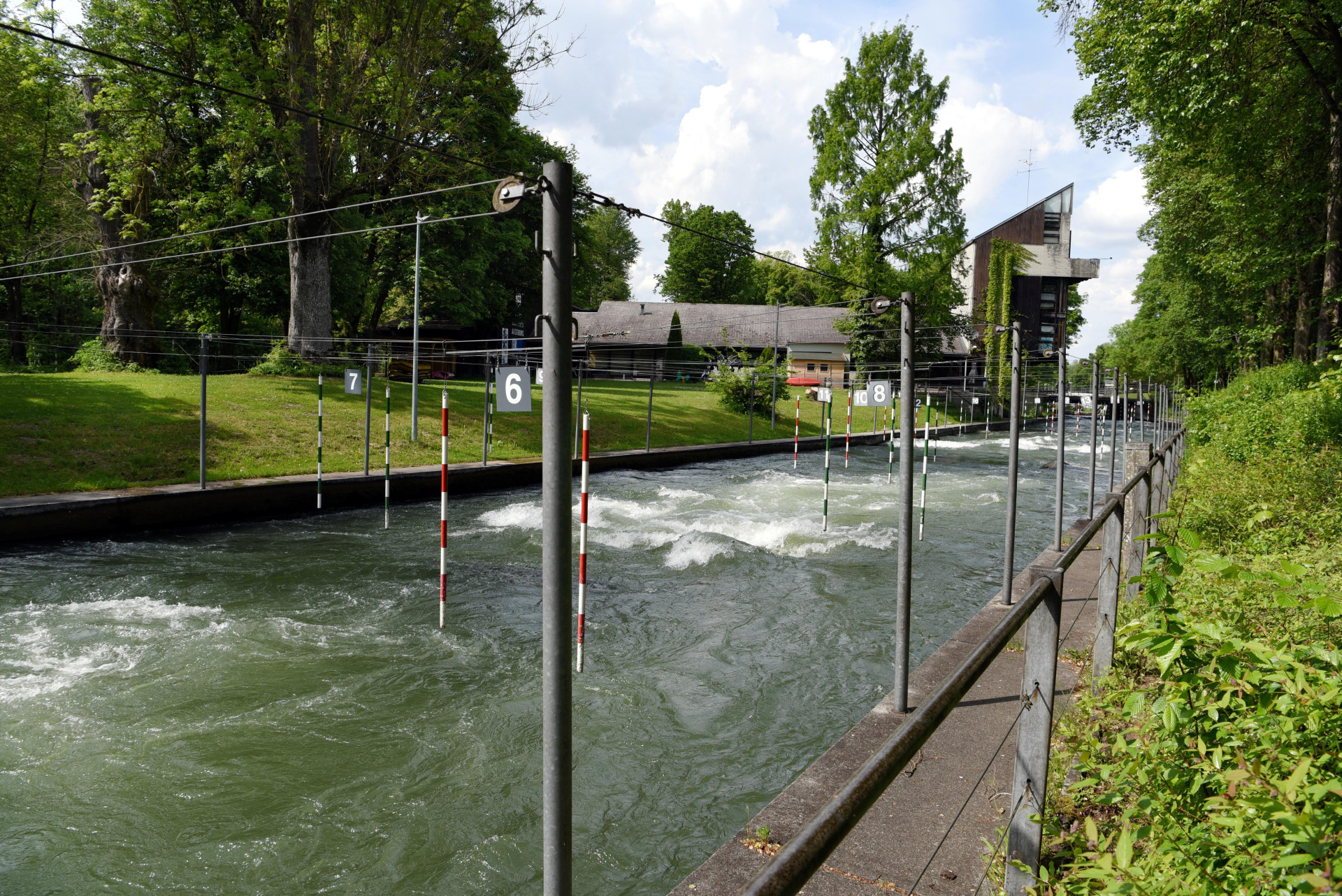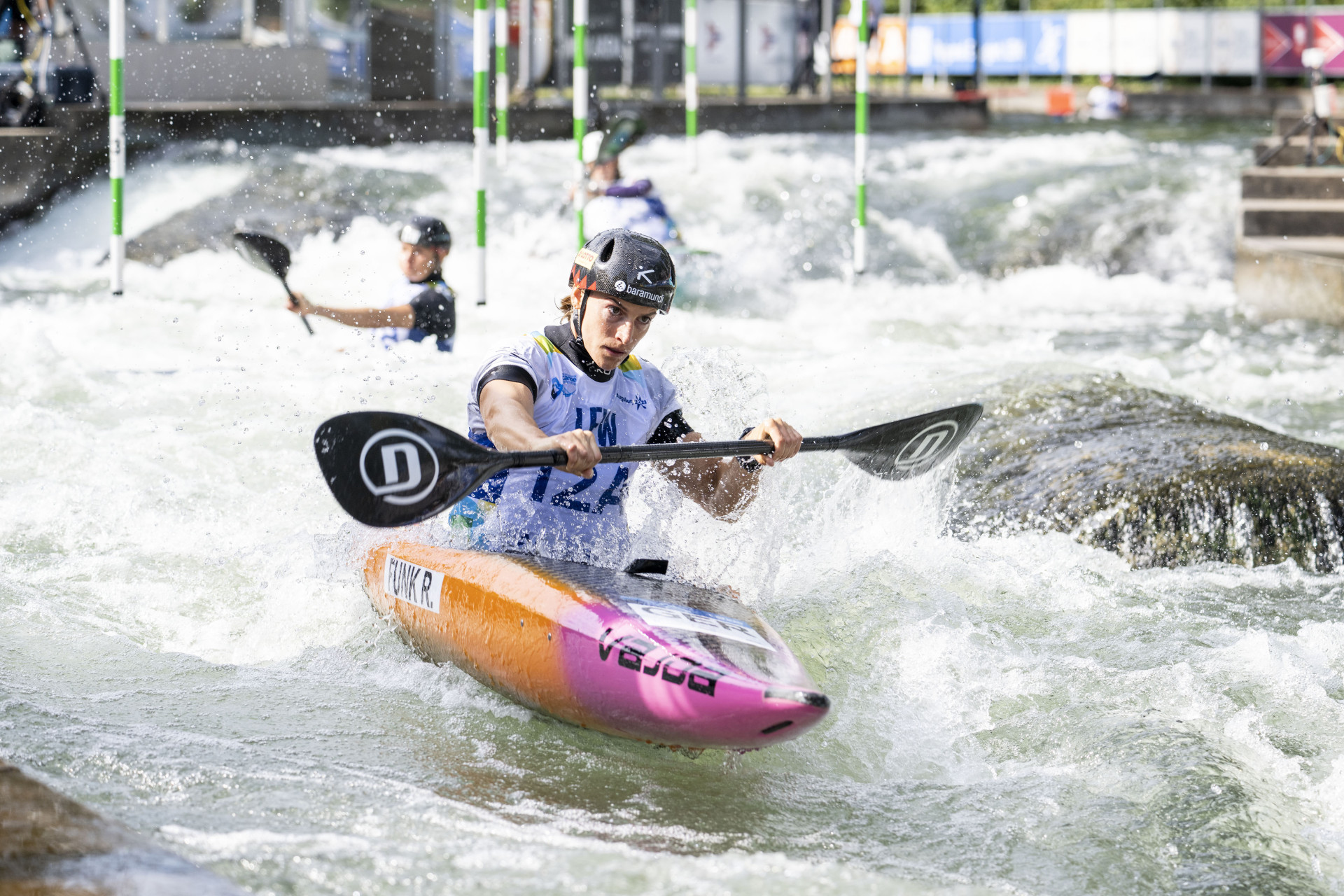
22
Canoe Course (Eiskanal)
For the 1972 Olympic Games, the historic ice canal was tranformed into the world's first artificial white-water canoe course. Thus, modern sport is also part of the centuries-long continuity of Augsburg's water system. The course is still used today for international competitions.
Building history and description
- artificial canoe racing course with start and finish building, press and organization building, accommodation building (today Bundesleistungszentrum)
- located between Hauptstadtbach and Lech
- Augsburger, Spickel-Herrenbach; Am Eiskanal
- direct proximity to the high drain and historic drinking waterworks at the high drain
- Erection 1970-1972 for the 1972 Summer Olympics
- Architects Reinhard Brockel and Erich Müller, landscape architects Gottfried and Anton Hansjakob
- Canoe racing course as the backbone of the entire system and subordination of all other functional structures under this motif
- convertible grid structures, wings assembled as an atrium-like group
- site-dominating press tower, large-scale architectures frame the concrete channel of the canoe line
- The staircase and terrace system ensures the harmonious integration of the building mass into the powerfully moving relief of the terrain surfaces
- Combination with wooden cladding and wooden roof shingles
- large glazing
- Exposed concrete
- special place of an accompanying river landscape and a natural environment
- additional shaping force of the material-oriented concrete as art material
- Start building and target building as the beginning and end of the entire complex, decreasing monumentality of the buildings towards the edges
Use and purpose
- Built for the 1972 Summer Olympics, then the world's first artificial canoe racing course
- Designed for further use at construction
- An essential design principle was the connection to the hitherto historically grown, old city stream was integrated into the canoe route
- Stair steps like a height layer model, the choice of materials taken from nature, thereby artificially developing the natural Lechauen landscape
- Canoe racing course at the Ice canal as an expression of Augsburg's modern urban development in the second half of the 20th century, so-called "mother of all artificial canoe routes" and symbol of Augsburg's status as a city of sport, innovative and modern hydraulic engineering
- Ice canal as a former component of the drinking waterworks at the high drain
Authenticity and unique features
- Original state preserved and protected, yet actively used sports facility, currently list extension of the Bavarian State Office for the Preservation of Historic Buildings of the 1960s and 1970s
- testifies to the permanent further development and rededication of individual components of the Augsburg water management system into a sports venue, including a clubhouse, recreational area and gastronomy
- Use of innovative, state-of-the-art technology and orientation to currents in international architecture and landscape design









